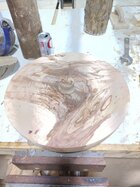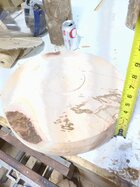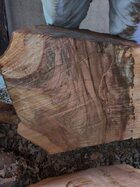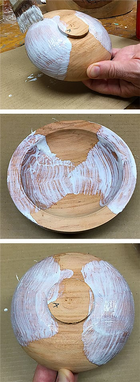Hi, I have two big pieces of pecan crotches. So ... 4 halves. I ancorsealed the ends after I split them about a week ago but when I checked today they seem to be cracking on the face. So that's one thing. I decided I should probably cut them into rounds and either first turn them or just wax the heck out of them. I got as far as rough turning one piece. When rough turning I understand one should make it about 1" think per 12" diameter, but that probably does not hold true for a platter which would be shrinking differently.
So here are my questions
1. How should I store the logs? wax the face too? or cut them into rounds then wax the whole dang thing? or do I have to rough turn them all?
2. How thick should a rough turned platter be? The one in the picture is about 3" thick X 16 in diameter with a slight concave
3. How should I seal the rough turned platter? just coat the whole thing?
4. Should I thrice turn it?
5. Any design advice/ideas would also be greatly appreciated
Thanks,
Raif


So here are my questions
1. How should I store the logs? wax the face too? or cut them into rounds then wax the whole dang thing? or do I have to rough turn them all?
2. How thick should a rough turned platter be? The one in the picture is about 3" thick X 16 in diameter with a slight concave
3. How should I seal the rough turned platter? just coat the whole thing?
4. Should I thrice turn it?
5. Any design advice/ideas would also be greatly appreciated
Thanks,
Raif




